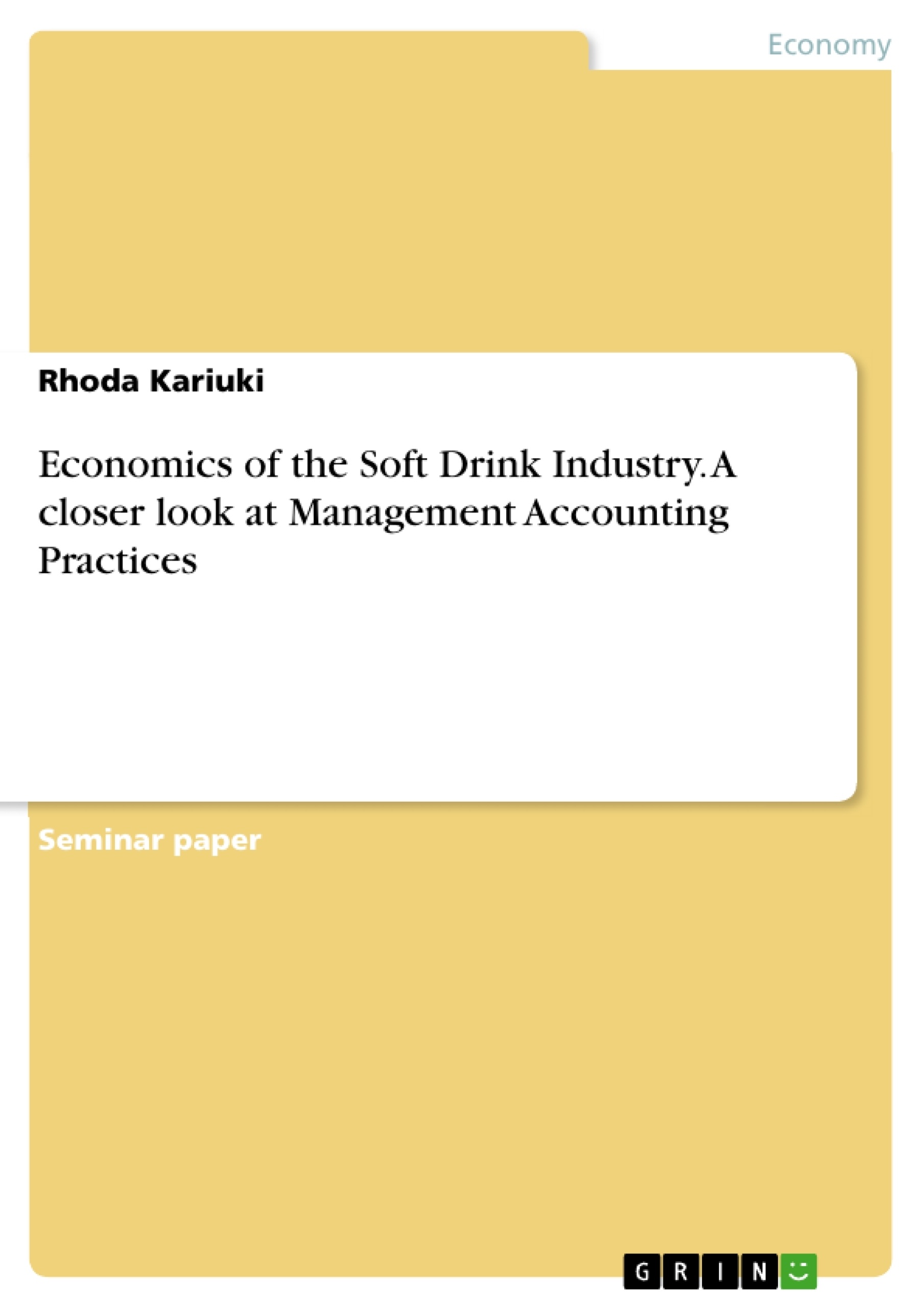This report issues the organization of the Soft Drink Industry with a closer look at the microeconomic, macroeconomic and critical management accounting practices that the companies can leverage to expand thier market in other states. The beverage industry in the United States has been experiencing shifts in demand, taste and demographics over the past years.
Most of its consumers are moving further away from soft drinks with high-standard calories to natural and more healthier options. This makes it the ideal time for companies, manufacturing natural soft drinks, to expand and corner the market. Therefore, this organization can maximize its potential in another state since its product is healthier as it has twenty-five calories, has a low minimum added sugar of about five grams and has no chemicals or preservatives. This makes it more concentrated in the natural fruits, which come in apples, oranges, pineapples, and grapes.
Inhaltsverzeichnis (Table of Contents)
- Abstract
- Microeconomics
- Macroeconomics
- Management Accounting Practices
- Conclusion
Zielsetzung und Themenschwerpunkte (Objectives and Key Themes)
This report aims to provide a comprehensive analysis of the microeconomic, macroeconomic, and management accounting considerations that a natural soft drink company can leverage to expand its market in other states. The report examines the current trends in the beverage industry, highlighting the increasing demand for healthier and natural options. The report analyzes the factors contributing to this shift in consumer preferences and explores the opportunities and challenges for companies seeking to capitalize on this growing market.
- The changing landscape of the soft drink industry
- The growing demand for healthier, natural soft drinks
- Microeconomic factors influencing the soft drink market
- Macroeconomic conditions impacting the expansion of natural soft drink companies
- Management accounting practices for optimizing expansion strategies
Zusammenfassung der Kapitel (Chapter Summaries)
- Abstract: This chapter introduces the current state of the U.S. beverage industry, emphasizing the growing consumer demand for healthier soft drink alternatives. It outlines the potential benefits of expansion for a natural soft drink company, highlighting the low-calorie, low-sugar, and preservative-free nature of its product.
- Microeconomics: This chapter analyzes the microeconomic factors driving the shift towards healthier soft drinks, exploring consumer preferences, market competition, and pricing strategies. It discusses the challenges faced by traditional carbonated soft drink producers and the opportunities for natural alternatives.
- Macroeconomics: This chapter examines the macroeconomic environment in the United States, highlighting the current state of the economy and its potential impact on the soft drink market. It analyzes how the recovery phase following the COVID-19 pandemic is influencing consumer spending and demand for healthier products.
- Management Accounting Practices: This chapter explores essential management accounting practices that natural soft drink companies can utilize to optimize their expansion strategies. It focuses on techniques such as cost transformation and management, highlighting their importance in achieving cost efficiency, product value preservation, and competitive advantage.
Schlüsselwörter (Keywords)
The report focuses on the soft drink industry, consumer preferences, health trends, microeconomics, macroeconomics, management accounting practices, cost transformation, and market expansion. It analyzes the challenges and opportunities faced by natural soft drink companies in a competitive and evolving market.
- Arbeit zitieren
- Rhoda Kariuki (Autor:in), 2023, Economics of the Soft Drink Industry. A closer look at Management Accounting Practices, München, GRIN Verlag, https://www.hausarbeiten.de/document/1375132


